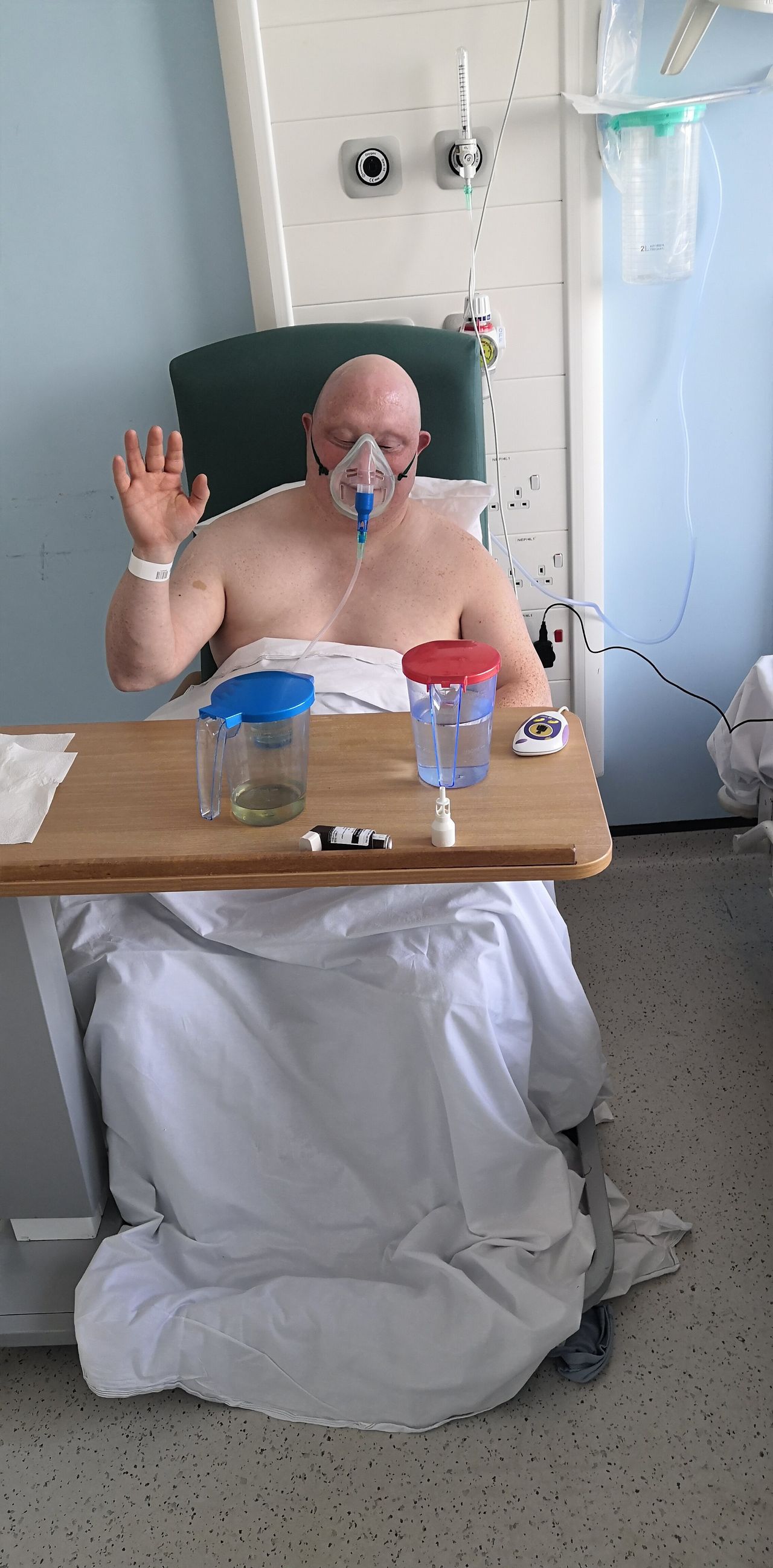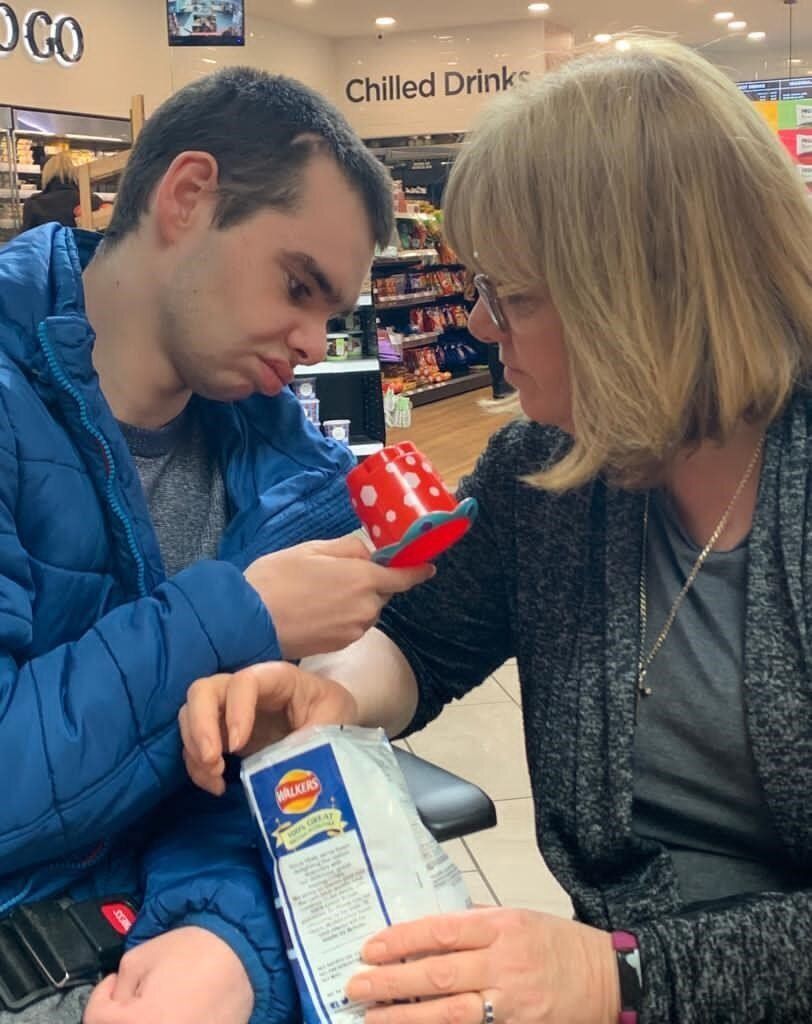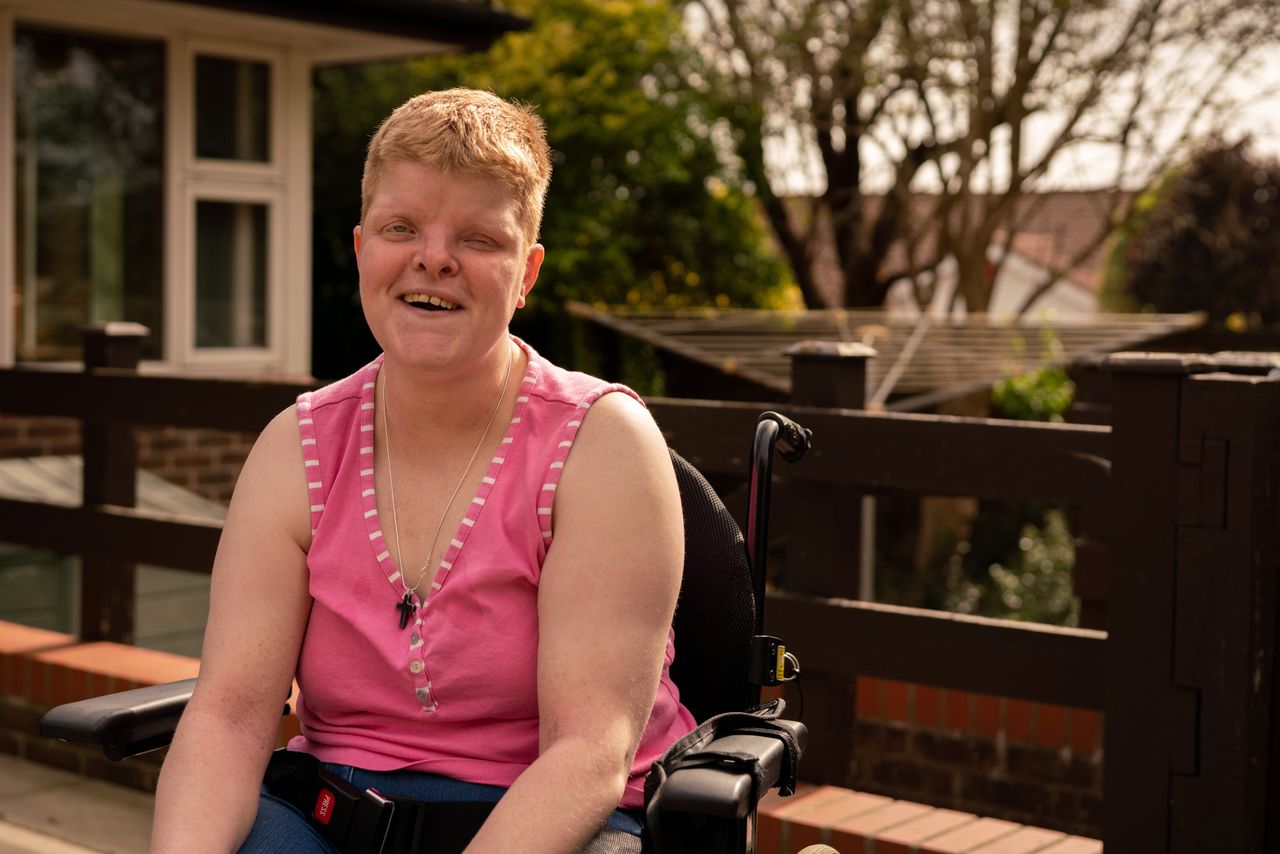Even before Covid-19 struck, people with learning disabilities in this country were dying at a disproportionate rate.
In an ordinary pre-Covid year, there were approximately 1,200 preventable deaths of people with a learning disability in hospitals.
“There are a lot of people who think that a person’s life is less valuable because they have a learning disability – especially in healthcare,” says Jackie O’Sullivan, communications, advocacy and activism director of the charity Mencap. “Covid-19 has accentuated an awful lot of this.”
Lisa Hopkins, chief executive of the charity SeeAbility, agrees. “As a society, we don’t see people with learning disabilities as equal. They’re always tucked away or sent to special schools and not given access to work. They’re just not seen or heard, and therefore they apparently don’t matter.”
In March, Covid-19 guidance published by the National Institute for Health and Care Excellence (NICE) stated patients with coronavirus had to be assessed on a so-called “Clinical Frailty Scale” to determine whether they would be admitted to critical care.
This guidance led to some people with a learning disability – of which there are around 1.5m in the UK – having “do not resuscitate” orders (DNRs) placed in their medical files, sometimes even without them or their families being consulted or informed.
“It was just awful,” says Lisa. “They were just these blanket ‘do not resuscitate’ orders that were sent out without any consultation and without any understanding of the person’s medical history.
“Everyone has a better chance of survival if they’re going to the hospital and people with learning disabilities are not an exception. They were just left to die.”
Steven, 43, was admitted to hospital in March after exhibiting symptoms of Covid-19. His father John received a phone call a couple of days later informing him that his son – who has Down’s syndrome – would not be given a ventilator if he needed one.
“I received a call from a doctor who told me that a decision had been taken. I was exercising in the park at the time of the call and had to find a bench to sit down – I was really taken aback,” John says.
“When I asked why, the doctor told me that Steven had ‘underlying issues’. It is true that Steven had been diagnosed with vasculitis last December and he’d undergone treatment which affected his immune system, but other than this, he was perfectly healthy.”
Steven’s DNR notice was removed after direct intervention by his doctor and his health since has greatly improved. But some people weren’t so lucky and died after being denied potentially life-saving treatment based on their learning disability as a result of these notices.
“There were cases where three or four people with a learning disability were living in one care setting, and these DNR notices were applied on a blanket basis to all of them and without their knowledge,” Jackie says.
Between March 19 and May 19, 78% of people with a learning disability whose death was attributed to Covid-19 had a DNR notice on their file, according to a report by the Learning Disabilities Mortality Review (LeDeR).

The NICE guidance was challenged by charities and quickly revised, but there are some concerns that many otherwise healthy individuals with a learning disability may continue to have DNR notices on their medical records without their knowledge.
“The genie was out of the bottle by then and letters were already sent out,” Jackie says. “We still haven’t managed to find out who’s gotten them and have them all removed.”
Lisa adds: “There are lots of people who don’t have a support provider or who live alone or with elderly parents. For sure there will have been people who received a letter and who wouldn’t have known what else to do.”
Data released in November showed people with a learning disability were up to six times more likely to die from Covid-19 during the first wave of the pandemic. In the 18 to 34 age group, the death rate for those with a learning disability was 30 times higher.
The use of DNR orders – which is unlawful if done without consulting the patient or their family – likely contributed to the shockingly disproportionate number of Covid-19 fatalities in people with learning disabilities. But that doesn’t explain all of those deaths.
“We haven’t got to the bottom to it,” says Jackie. “We’re still waiting on Public Health England (PHE) data as to what happened.”
At the beginning of the pandemic, access to personal protective equipment (PPE) and testing was prioritised for the NHS and care homes, whereas most disabled people live at home or in supported living settings – homes shared by a few people with a similar disability, with support workers who help with personal care or simple tasks.
“The focus on PPE and regular routine testing has been on care homes for older people and then care homes for disabled people. Supported living and domiciliary care [where people receive care in their own home] have been at the bottom of the list, even though that’s where the bulk of people with a disability live.
“If you’re living in a supported living setting or you’re getting care at home, your carers aren’t necessarily getting tested every week. A lot of people are falling through the cracks.”
Many people with learning disabilities are dependent on their carers or family members and may struggle to communicate with healthcare professionals and be unable to pass on information about their medical history and needs.
But Mencap has reported nurses witnessing people with learning disabilities being transported to hospital wards unaccompanied by family members of support staff, in accordance with Covid-19 guidance that states an adult with symptoms cannot be accompanied in an ambulance.
Not only can this be a terrifying and distressing experience for the patient, but it can mean vital information can be missed out when they receive medical treatment. For some, this could mean the difference between life and death.
“If you’ve got someone with a learning disability who has difficulty communicating with the staff about their symptoms or about how they’re feeling, then a support worker needs to be there,” Lisa says. “But they weren’t allowed to go into hospital and subsequently the death rates went up.”
Bradley, 27, has been hospitalised 15 times because of his severe epilepsy since March. He also has a learning disability, cerebral palsy, autism and other complex health issues.
“Learning disability is so badly understood in hospitals,” his mother Jo says, adding that in her experience there are few nurses who have the training, ability or time to support people with a learning disability.
On a previous occasion, Bradley ended up in an intensive care unit (ICU) after suffering seizures and was put on a ventilator. Instead of being transferred into another ward as is normal hospital policy, staff instead sent him directly home because they were concerned they could not manage him and his behaviour.
As a result, each time he was admitted into the hospital this year, Jo was terrified he would contract Covid-19 and bring the virus back into the care home.

For individuals who are prone to anxiety – which many people with a learning disability experience – the pandemic has forced an overwhelming pressure on their mental and physical health and on family relationships. “People with autism are generally more dependent on having a routine and losing that can be really significant and damage your well-being,” says Jackie.
A study published last week by the charity Dimensions found that 93% of people with learning disabilities or autism feel more isolated because of the pandemic. “If you think about how it’s impacted the rest of us, it’s been terrible. For people with learning disabilities, if’s been much, much worse,” says Lisa.
Emily Stewart, 34, has cerebral palsy and loves going outside to meet other people in her community in East Sussex. When lockdown happened in March, “all of that changed”. “I tried to stay connected with my friends and family, but I found it really tough that I could only email or phone them rather than seeing them face to face,” she says.
“Now we can go out again, but it’s still not the same as it was. It’s difficult to social distance because it just doesn’t feel normal to keep your distance from your friends. I also can’t see how far two metres is because of my visual impairment. My friends like to hug – that’s what we do and we’ve been missing that as much as anything else.
“I can’t wait for things to get back to normal.”

Despite the abundance of evidence showing how Covid-19 has exacerbated the vulnerabilities and inequalities within the healthcare system faced by individuals with learning disabilities, the government has chosen not to put them at the front of the queue for the vaccine.
Instead, people with Down’s syndrome are classed as clinically extremely vulnerable and are in priority group four, while people with severe and profound learning disabilities are in priority group six. All other learning-disabled people are not included on the priority list.
“The problem is that GPs don’t actually have a determinant scale for severity of your learning disability, so it would be up to them to decide whether you are in category six or not,” Jackie says.
The PHE report on the Covid-19 deaths of people with learning disabilities does not contain breakdowns of severity, but the case for prioritising all of these individuals to receive a vaccine is strong. “They should be up there with people with long-term health conditions and the elderly population,” says Lisa. “Their death rates are as high as those groups, but they’re just not treated as equal members of society.”
Vaccinations would also allow visits in care settings from loved ones, which would undeniably benefit the mental health of people who have suffered prolonged isolation. “A lot of people with learning disabilities have difficulty communicating verbally so a Zoom call or FaceTime just doesn’t work. What matters to them is touch – to hug and hold hands – that’s how they connect with their families.”
In response to HuffPost UK’s request for comment regarding the call from charities to prioritise all people with learning disabilities, the Joint Committee on Vaccination and Immunisation (JCVI) said: ”The JCVI’s advice on Covid-19 vaccine prioritisation was developed with the aim of preventing as many deaths as possible.
“As the single greatest risk of death from Covid-19 is older age, prioritisation is primarily based on age.”
